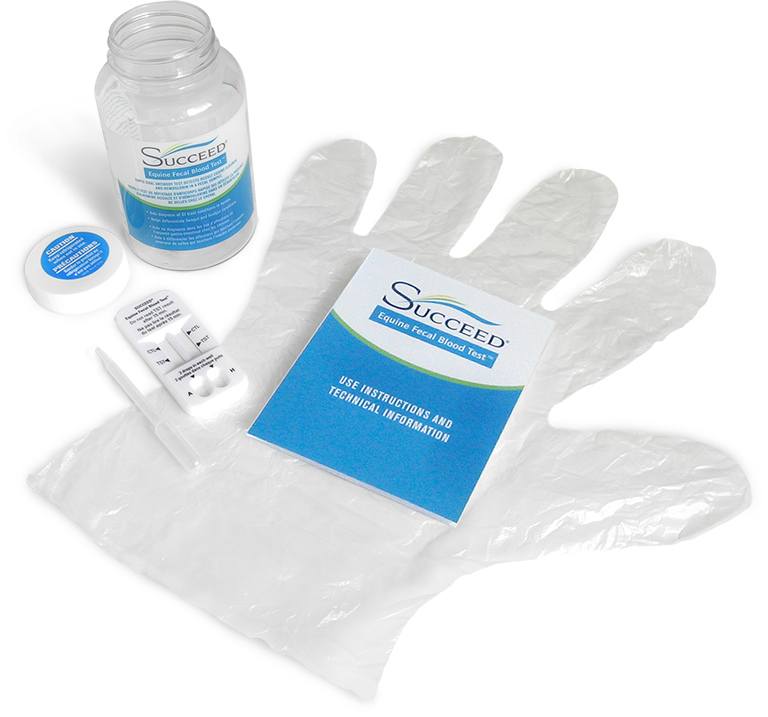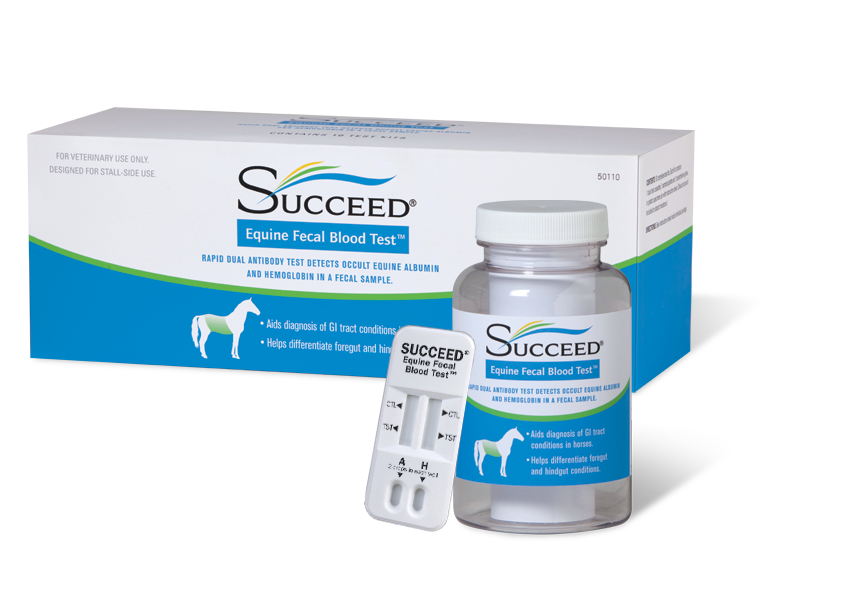- No expensive equipment and no hauling.
- No tricky, time-consuming or invasive procedures.
- No waiting hours or even days for results.

Simple, Step-by-Step Instructions for Use
- Collect a fresh (less than 30 minutes old) fecal sample from the subject horse, loosely dropping fecal matter into the provided plastic container up to the Sample Fill Line.
- Add clean tap water (potable, room temperature), filling to the Water Fill Line on the container.
- We often recommend using bottled water for best results, especially if the location has well water.
- Replace lid on container and shake thoroughly to ensure complete mixing.
- Use the provided pipette to collect some of the fecal/water mixture from the container, avoiding particles.
- Apply two drops of solution to each of the two sample wells on the test cassette.
- Test results should appear within 15 minutes.
How to Know the FBT is Working
The dual cassette includes two red, horizontal line indicators each for Test A and Test H. The first is a control line that shows the test is working; this should appear every time you run the test. The second is the test line, which only appears if the test is positive. The FBT is sensitive to heat and must be refrigerated when not in use. Be sure to read and follow the storage and handling instructions to ensure the FBT will work properly.
Reading the FBT Results
- If a solid line appears only at the CTL point (Control line) on either Test A or Test H, this is a negative result.
- If a complete, solid line appears at the TST point (Test line) on either or both Test A and Test H, that is a positive test result.
A solid line of any shade represents a positive result.
The potential combinations of positive and/or negative results for the blood components albumin (Test A) and hemoglobin (Test H) can indicate issues in the foregut, hindgut, or both, and may provide some indication of the severity of the source of bleeding. This information may be used to provide objective insight into the full evaluation provided by veterinarians.
When to Test With the SUCCEED® FBT
When Not to Test With the SUCCEED® FBT
The SUCCEED Equine Fecal Blood Test uses equine-specific antibodies to detect components of blood in a fresh fecal sample. Always keep in mind that blood may be introduced into the horse’s digestive tract from external sources, and test accordingly.
Ask Us About a Free Trial
How to Purchase the SUCCEED® FBT
The SUCCEED FBT is available for purchase through your veterinary supply distributor.

Take the next steps toward supporting your practice.
Let’s continue the conversation on equine GI health management. Let us know how we can help.

